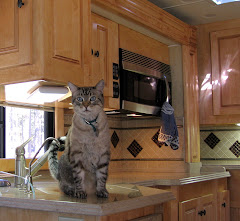Ever wonder where on earth our National Anthem was created? While under British Guard on an American truce ship on the Patapsco River, Francis Scott Key watched the bombardment of Fort McHenry. As a young lawyer-poet, relieved to see the American Flag the next morning, he penned his infamous poem. The Battle of Baltimore was fought September 13 - 14, 1814.
The fort, constructed between 1799 and 1802, consisted of 5 stars, or points. Each point was visible from the point on either side. It allowed the fort to be covered with only 5 men.
The second story and two guard houses were added in the 1830's. There is much history to recall at Fort McHenry, but time and space prevent further comment. It is cold and very rainy, and we are anxious to move on to The Hampton Historic Site, about 19 miles from Fort McHenry.
The Hampton House, completed in 1790, was at the time, the largest house in the United States. This may be the finest example of a Georgian mansion in America.
The land dates back to 1695, when Henry Darnell, cousin to Lord Baltimore, was granted the land. From here it passed to Charles Ridgely, which expanded the estate to 11,000 acres.
Ridgely and his sons establish an iron works, and with various wars, fortune upon fortune was made supplying arms and implements to the Patriot cause.
Construction of the home begins in 1783. Now the estate consists of 24,000 acres.
By 1829 Ridgely's empire grows to 25,000 acres with ironworks, grain crops, beef cattle, thoroughbred horses, coal mining, marble quarries, mills, and mercantile interests. In 1815 Ridgely is elected Governor of Maryland.
The complete story is posted on the National Park Service website, link provided below. The mansion and 60 acres became part of our National Park Service in 1979.
For further information:
Fort McHenry and
Hampton Historical Site
































1 comment:
The pictures of the Hampton House are so beautiful! Thanks for sharing.
Post a Comment